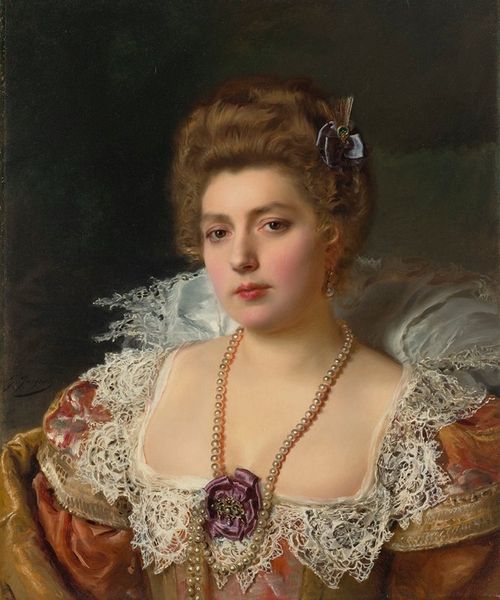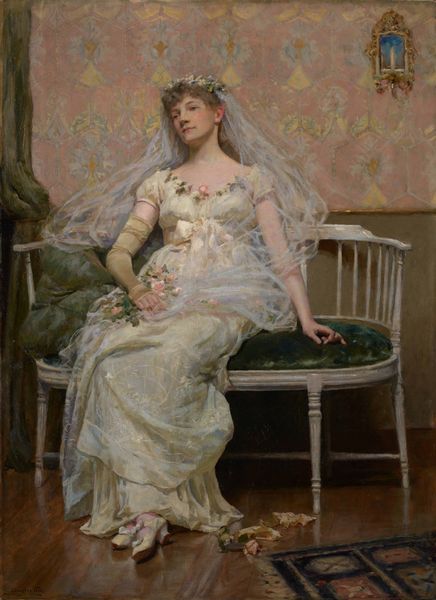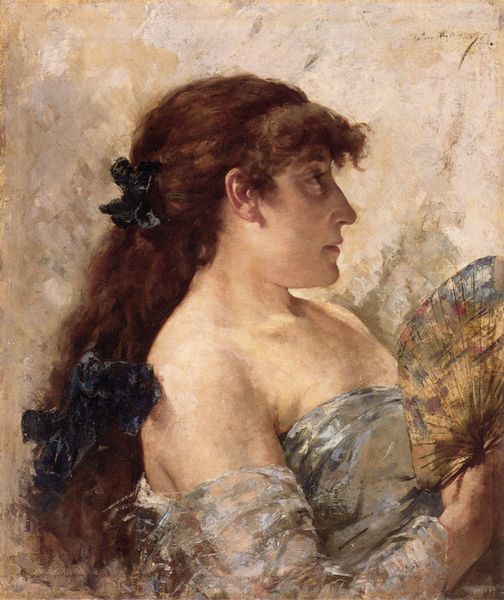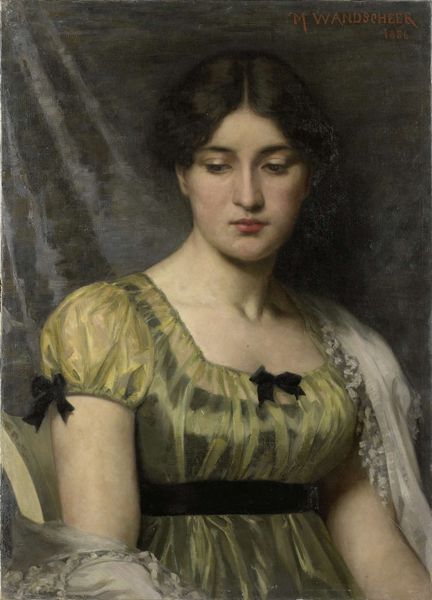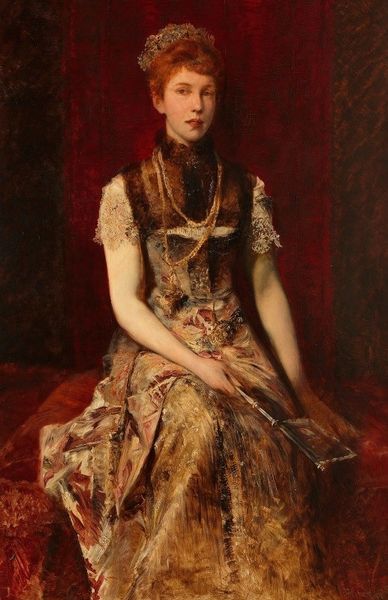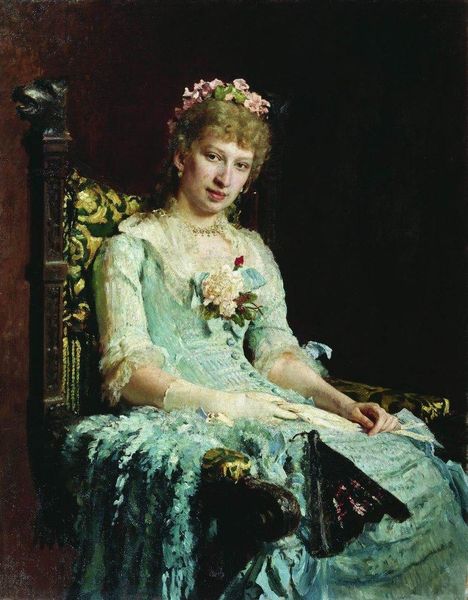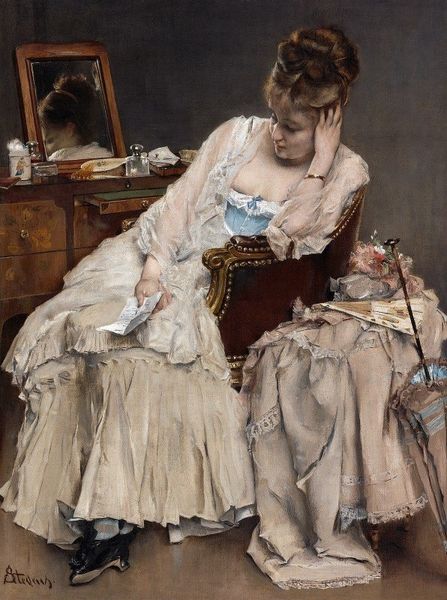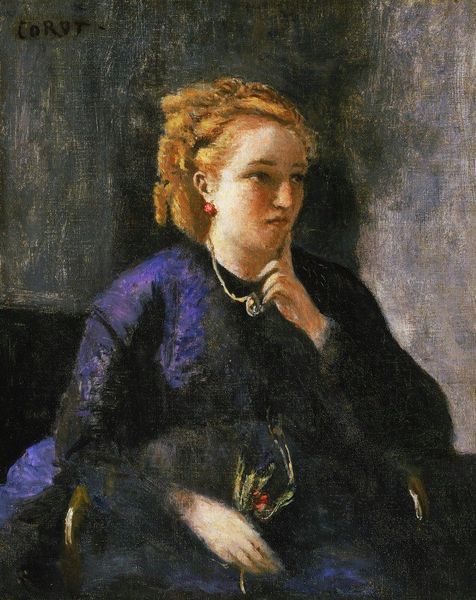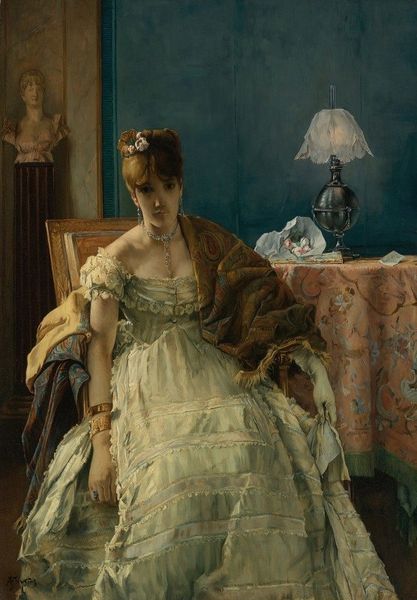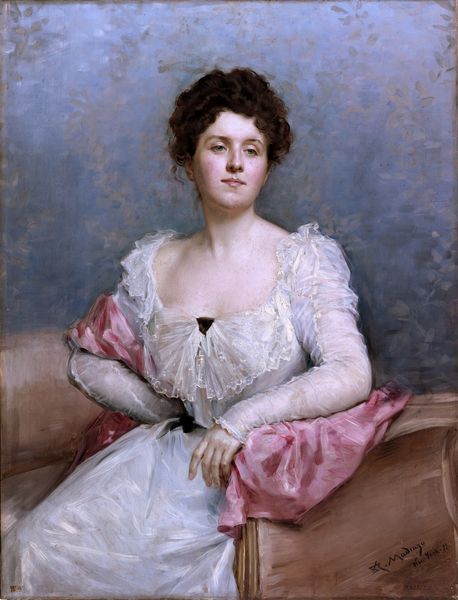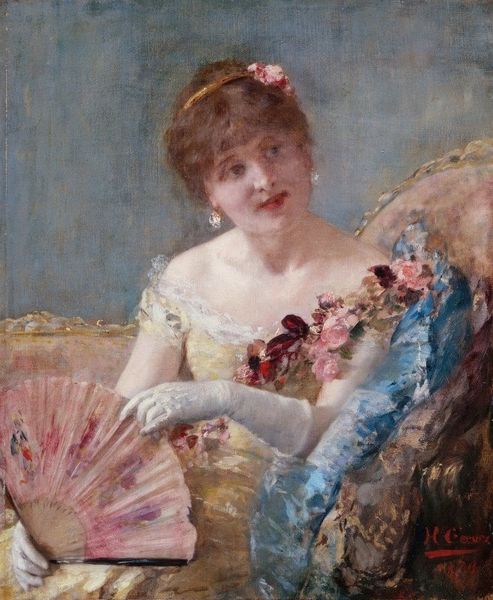
Copyright: Public domain
Editor: Alfred Stevens’s “The Parisienne Sphinx,” painted in 1867. I find it so captivating; her expression is aloof, yet alluring. The composition feels very intentional with the contrast between light and dark elements. What strikes you most about this work? Curator: Well, first, I immediately focus on the artist's title—"sphinx." The artist subtly encourages us to interpret the sitter through this potent symbolic lens. Editor: How so? Curator: The Sphinx represents secrets, riddles, a silent wisdom that simultaneously attracts and terrifies. Observe her direct gaze, that fur stole like a protective animal around her neck; what cultural narratives about femininity and Parisian society might these details evoke? Editor: I see what you mean. There's this tension, right? Between her finery and that almost impenetrable look. Maybe it suggests the complexities beneath the surface of Parisian life? Curator: Precisely! Also, note the specific year, 1867. France was rapidly modernizing; this painting almost becomes a study in contrasts reflecting the era. Do you notice anything about the materials that relate to the visual impression the portrait offers? Editor: It seems both precise and loose at once, and how the blurred effect contributes to that "hidden" meaning. I originally saw just a portrait, but now, reflecting upon your words, this Sphinx of Paris seems far more multifaceted, a deeper reading of cultural context. Curator: And hopefully that awareness will enrich the experiences of our visitors today.
Comments
No comments
Be the first to comment and join the conversation on the ultimate creative platform.

